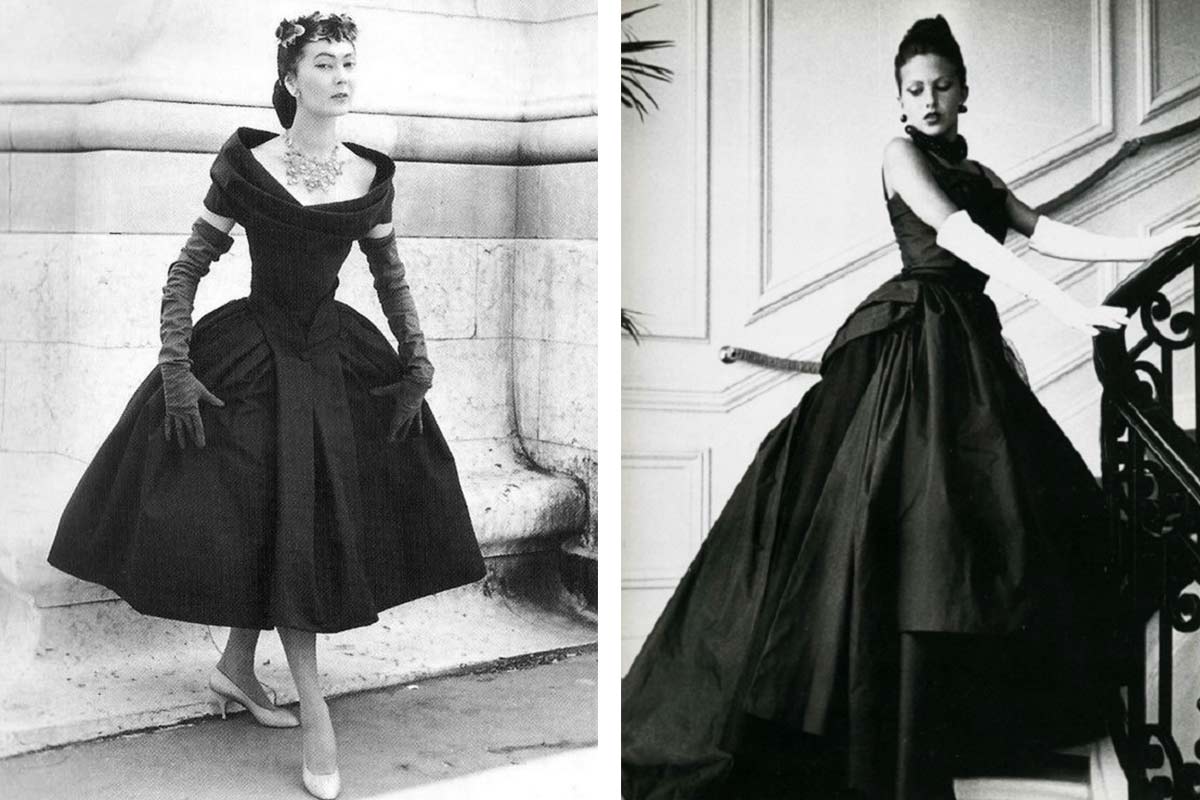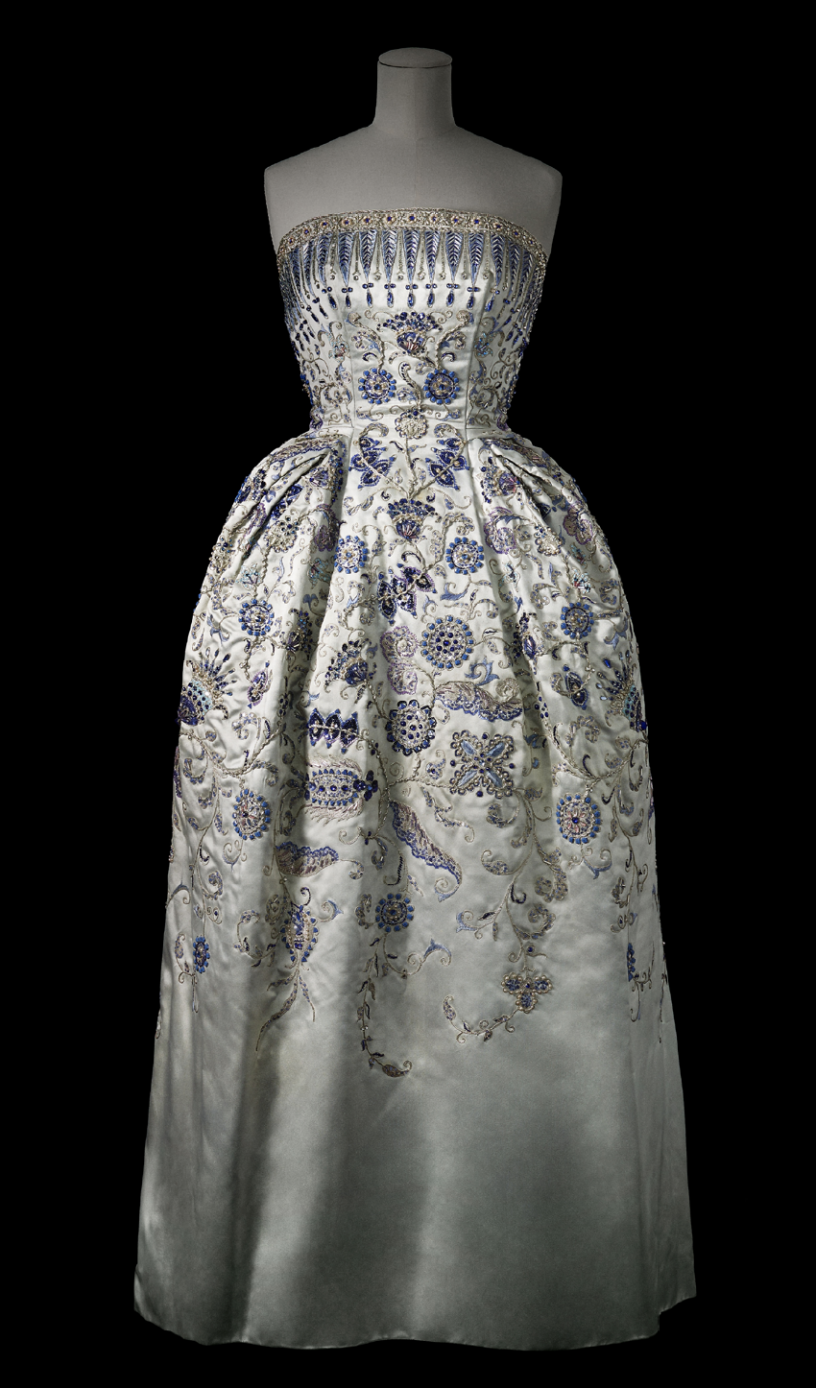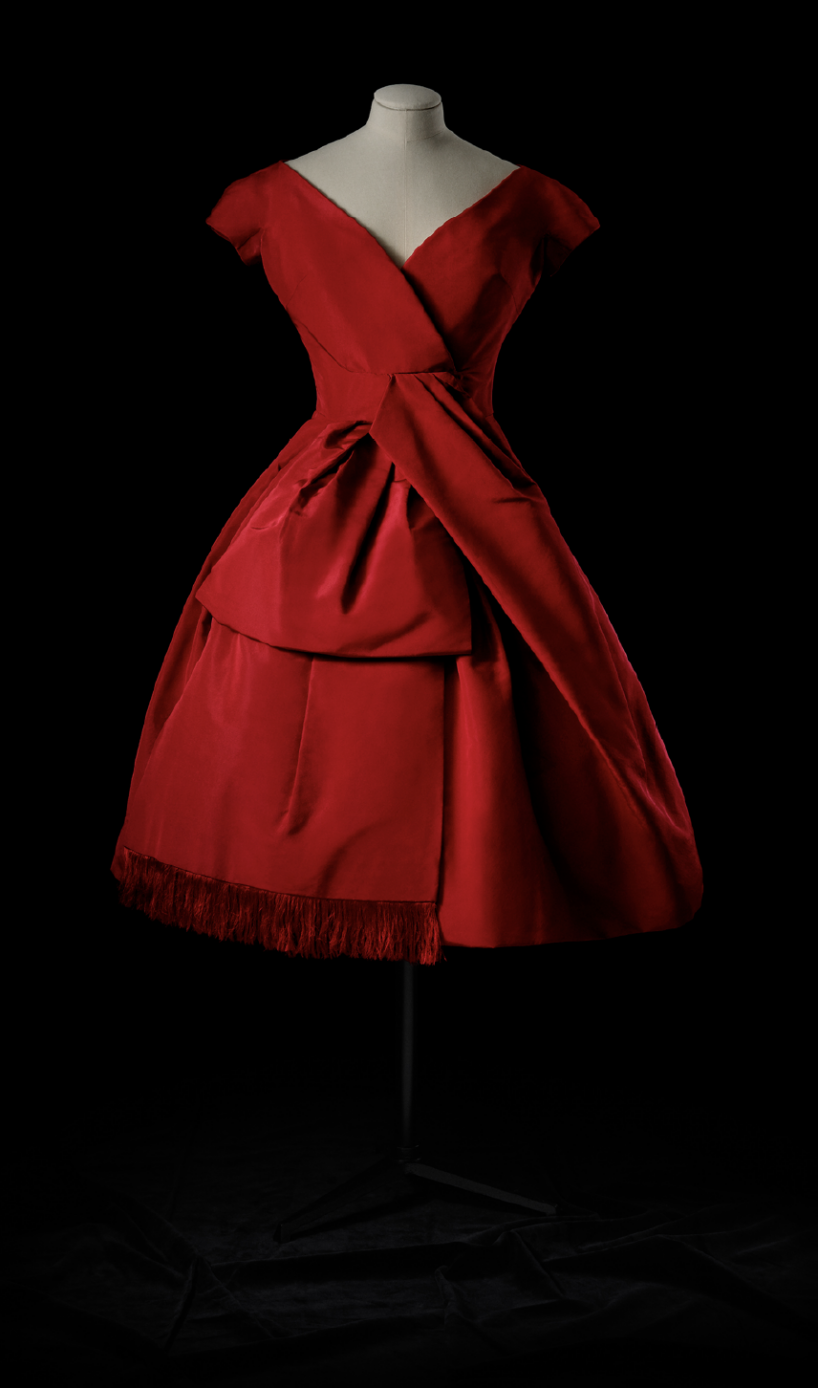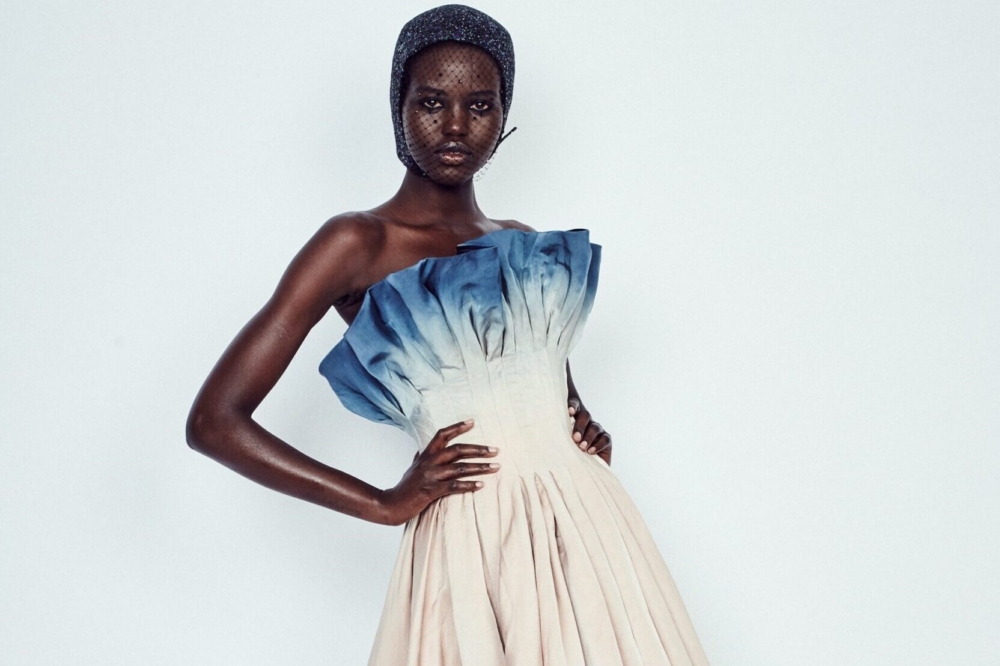Christian Dior has been a staple in haute couture since the mid-century. The designer, whose sumptuous and elegant vision of femininity redefined modern dress for women has had a formidable presence in fashion ever since. The temporary Dior exhibition at the McCord Museum in Montreal features apparel from Dior’s first decade of designs, with over 40 garments from the Royal Ontario Museum’s collection of haute couture from 1947 to 1957, as well as the McCord Museum’s collection. All garments are donations to the museums from either Toronto’s socialites or Montreal donors.

Dior’s vision in his very first collection was to “make women feel like women again”, which critics would later describe as the ‘new look’, his vision included more feminine silhouettes, cinched waistlines, and ruffled skirts. Although the war left behind devastation, the desire for women to feel elegant again was a prominent catalyst for a return to ostentation and glamour; Christian Dior did more than deliver on that desire. Influencing a whole new ideal of femininity, Dior at one time accounted for over five percent of all French exports and revived modern dressmaking; all in the span of 10 years with 22 collections.

The McCord museum’s exhibit contains a stunning line of garments and accessories that transport through time, providing a glimpse into the world of fashion in the post-war political climate.
Although the entire collection is sublime, the true ‘pieces de resistance’ of the show are the gowns. At the outset of the exhibition lies a stunning strapless gown called ‘Autriche’, pulled from Dior’s Longue line. Deemed as a “naked” look, the gown is constructed using 19th-century style corsetry, consisting of silk faille, silk velvet, a tulle corset, and steel piping.

Christian Dior’s influence on womenswear, however, extended past just gowns. Dior modernized the mid-century women’s wardrobe, introducing cocktail dresses in varying lengths, borrowing ideas from sportswear, and incorporating the corseted concave torso silhouette upon which most of his designs were based. Its purpose? To raise the bust, flatten the stomach and highlight the waist and hips.
This silhouette became a staple in the designer’s lines, and the exhibit showcases this even in his daytime suits and dresses. These pieces consist of the same cinched and hyper-feminine silhouette accented by pencil skirts, long sleeves, and usually accompanied by leather gloves.

Two such designs are the Cocotte dress and the Vol au vent two-piece day dress. The Cocotte is from the Spring/Summer collection of 1948, and consists of houndstooth wool, a pattern traditionally reserved for men’s sportswear; Dior made it his womenswear staple. The Vol au vent, on the other hand, is an elegant all-black two-piece intricately designed to stay in place and look the way it did. Both were deemed ideal for attending the Woodbine races in Toronto.
Besides the captivating gowns and dresses, the exhibit displays breathtaking jewelry, a history of the brand’s perfumes, accessories, footwear, and even embroidery and textile samples used in Christian Dior’s exquisite collections.
The exhibit, curated by Alexandra Palmer, Nora E. Vaughan Fashion Costume Senior Curator, with careful consideration to history and archival research, will be on display until May 2nd at the McCord Museum in Montreal.
 Ingrid Voicu Roth is an Editorial Intern at liminul.
Ingrid Voicu Roth is an Editorial Intern at liminul.
She is a writer and journalist based in Montreal. She holds a bachelor’s degree in Political Science and English from the University of Waterloo and is currently completing her graduate diploma in journalism from Concordia University.

